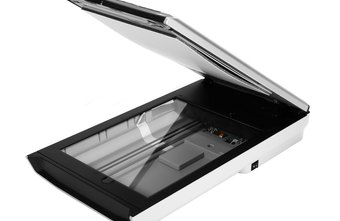Coaxial Cables : It is used by cable operators but sometimes ago it also used by telephone companies. Coaxial cable is a type of cable
that has an inner conductor surrounded by an insulating layer, surrounded by a
conductive shielding. Many also have an insulating outer jacket The diagram
below illustrates the construction of a typical cable. Electrical signal flows
through the center conductor.
Table. Common coaxial cable types and uses. There are many additional RG
designations, as well as variations within each number class.
| Cable type | Ω | Use |
| RG-6 | 75 | Video, TV |
| RG-8 | 50 | Radio, computer |
| RG-11 | 75 | Long runs |
| RG-58 | 50 | Radio, computer |
| RG-59 | 75 | Video, TV |
Advantages :
1. Coaxial cable can support greater cable lengths between network devices than twisted pair cable.
2. Thick coaxial cable has an extra protective plastic cover that help keep moisture away and stronger.
Disadvantages :
1. Thick coaxial is not bend easily so, it is difficult to install.
2. Difficult to troubleshoot a simple issue.
 Twisted Pair Cables : Twisted
pair cable consists of a pair of insulated wires twisted together. It is a
cable type used in telecommunication for very long time. Cable twisting helps
to reduce noise pickup from outside sources and cross-talk on multi-pair cables.
Twisted Pair Cables : Twisted
pair cable consists of a pair of insulated wires twisted together. It is a
cable type used in telecommunication for very long time. Cable twisting helps
to reduce noise pickup from outside sources and cross-talk on multi-pair cables.
The
most commonly used form of twisted pair is unshielded twisted pair (UTP). It is
just two insulated wires twisted together. any data communication cables and
normal telephone cables are this type. Shielded twisted pair(STP) differs from
UTP in that it has a foil jacket that helps prevent cross-talk and noise from
outside source. In data communications there is a cable type called FTP (foil
shielded pairs) which consists of four twisted pair inside one common shield
(made of aluminum foil). The
following are the cable types specified in ANSI/TIA/EIA which are mention below:
Category 1 : Cat 1 cable was originally designed
for voice telephony only, but thanks to some new techniques, long-range
Ethernet and DSL, operating at 10Mbps and even faster, can be deployed over Cat
1.
Category 2 : Cat 2 cable can accommodate up to
4Mbps and is associated with token-ring LANs.
Category 3 : Cat 3 cable operates over a
bandwidth of 16MHz on UTP and supports up to 10Mbps over a range of 330 feet
(100 m). Key LAN applications include 10Mbps Ethernet and 4Mbps token-ring
LANs.
Category 4 : Cat 4 cable operates over a
bandwidth of 20MHz on UTP and can carry up to 16Mbps over a range of 330 feet
(100 m). The key LAN application is 16Mbps token ring.
Category 5 : Cat 5 cable operates over a
bandwidth of 100MHz on UTP and can handle up to 100Mbps over a range of 330
feet (100m). Cat 5 cable is typically used for Ethernet networks running at
10Mbps or 100Mbps. Key LAN applications include 100BASE-TX, ATM, CDDI, and
1000BASE-T. It is no longer supported, having been replaced by Cat 5e.
Category 5e : Cat 5e (enhanced) operates over a bandwidth of 100MHz on
UTP, with a range of 330 feet (100 m). The key LAN application is 1000BASE-T.
The Cat 5e standard is largely the same as Category 5, except that it is made
to somewhat more stringent standards. Category 5e is recommended for all new
installations and was designed for transmission speeds of up to 1Gbps (Gigabit
Ethernet). Although Cat 5e can support Gigabit Ethernet, it is not currently
certified to do so.
Category 6 : Cat 6, specified under ANSI/TIA/EIA-568-B.2-1, operates
over a bandwidth of up to 400MHz and supports up to 1Gbps over a range of 330
feet (100 m). It is a cable standard for Gigabit Ethernet and other network
protocols that is backward compatible with the Cat 5/5e and Cat 3 cable
standards. Cat 6 features more stringent specifications for crosstalk and
system noise. Cat 6 is suitable for 10BASE-T/100BASE-TX and 1000BASE-T (Gigabit
Ethernet) connections.
Category 7 : Cat 7
is specified in the frequency range of 1MHz to 600MHz. ISO/IEC11801:2002
Category 7/Class F is a cable is based on four twisted copper pairs, features
even more stringent specifications for crosstalk and system noise than Cat 6. Advantages :
1. Cheaper and far easier to splice
2. Less susceptible to electrical interference caused by nearby equipment or wires.
3. In turn are less likely to cause interference themselves.
4. Because it is electrically "cleaner", STP wire can carry data at a faster speed.
Disadvantages :
1. STP wire is that it is physically larger and more expensive than twisted pair
wire.
2. STP is more difficult to connect to a terminating block.
A fiber optic cable is a network cable that contains strands of glass fibers inside an insulated casing. They're designed for long distance, very high performance data networking and telecommunications.
Compared to wired cables, fiber optic cables provide higher bandwidth and can transmit data over longer distances. Fiber optic cables support much of the world's internet, cable television and telephone systems.
Advantages :
1. One single mode fiber can replace a metal of time larger and heavier.
2. Multi-mode optical cable has a larger diameter and can be used to carry signal
over short distance.
Disadvantages :
1. Fiber optic versus metal cable is that it is difficult to make connections to
fiber optic cable.
2. The optical fiber must be highly polished to allow light to pass with little loss.

0 comments:
Post a Comment